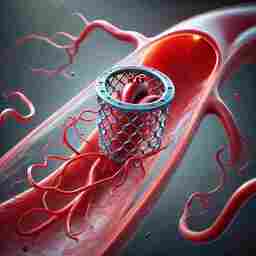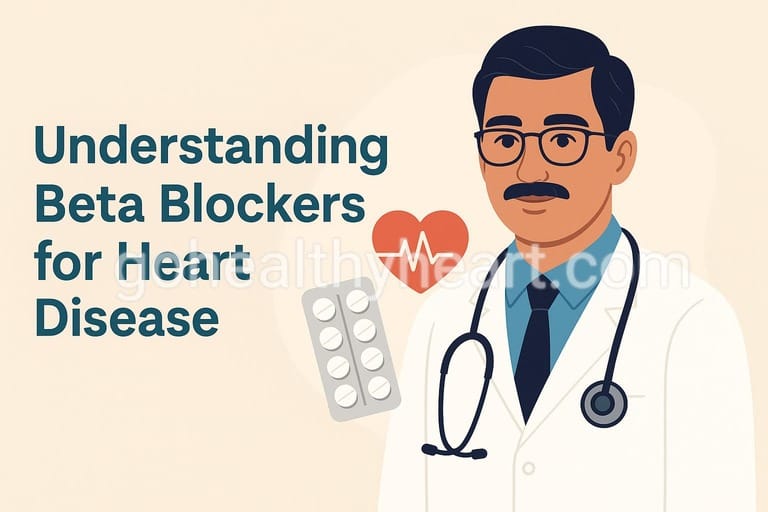Interventional Cardiology: Advanced Heart Care Explained

What is Interventional Cardiology?
Interventional cardiology is a specialized branch of cardiology that focuses on minimally invasive procedures to treat heart conditions. Instead of traditional open-heart surgery, which involves larger incisions and longer recovery times, interventional cardiology uses catheter-based techniques to open blocked arteries, repair valves, and treat other heart problems. This field has revolutionized heart care, especially for patients who need quicker recoveries or cannot undergo major surgery.
Unlike general cardiology, which deals with heart disease prevention and medication management, interventional cardiology zeroes in on treating structural heart issues and managing acute coronary syndromes. Procedures such as angioplasty, stenting, and even certain valve repairs have become essential parts of the cardiology toolkit, offering patients life-saving options with reduced complications.
Key Procedures in Interventional Cardiology
Angioplasty and Stenting
Angioplasty, often combined with stenting, is one of the most common procedures in interventional cardiology. It’s used to open blocked or narrowed arteries to improve blood flow. During an angioplasty, a small balloon is inflated in the artery, clearing blockages. Once the artery is opened, a stent—a tiny mesh tube—is placed to keep the artery from narrowing again. The whole process takes only an hour or two, but its impact on blood flow and heart health is profound.
When heart valves are narrowed, it restricts blood flow and puts extra strain on the heart. Balloon valvuloplasty uses a small balloon to stretch open a narrowed valve, often avoiding the need for open-heart surgery. The technique is less invasive, and for patients at high surgical risk, it’s a crucial option for improving heart function with minimal recovery time.
Atherectomy is another tool in an interventional cardiologist’s toolkit for removing plaque that has hardened within the artery walls. Specialized tools allow cardiologists to cut away or grind down this calcified plaque, restoring blood flow to the heart. Atherectomy is often chosen when blockages are particularly challenging or when other options like angioplasty are less effective.
Transcatheter Aortic Valve Replacement (TAVR)
TAVR is a breakthrough treatment for severe aortic stenosis—a condition where the aortic valve is too narrow. Traditionally, valve replacement required open-heart surgery, but TAVR allows for valve replacement via a catheter inserted in the groin or chest. Recovery is faster, and patients who once had limited options are now able to enjoy better heart health with less risk.
Cardiac catheterization is both a diagnostic and treatment tool in interventional cardiology. A catheter is guided through blood vessels to the heart, where cardiologists can assess pressure, blood flow, and structural abnormalities. If blockages are found, treatments like angioplasty or stenting can often be performed during the same procedure.
Benefits of Interventional Cardiology Over Traditional Surgery
One of the biggest advantages of interventional cardiology is its minimally invasive nature. Smaller incisions mean quicker recovery, less pain, and fewer risks, such as infection or scarring. For many patients, this means a shorter hospital stay and a faster return to everyday activities. This can be especially critical for elderly patients or those with multiple health conditions who may not tolerate major surgery well.
Additionally, interventional cardiology has allowed cardiologists to treat patients who, just a few years ago, would have had few options. New technology, better imaging, and more precise instruments have made these procedures safer and more effective, offering life-changing solutions with less disruption to patients’ lives.
Risks and Considerations
Despite its benefits, interventional cardiology is not without risks. Complications can include bleeding, infection, and restenosis (when an artery re-narrows). Pre-procedure assessments help cardiologists weigh the risks and decide the best course of action. For example, some patients with certain heart valve issues or extensive blockages might benefit more from open-heart surgery.
Lifestyle and post-procedure care also play a vital role in preventing complications. Patients are often advised on diet, exercise, and medications to maintain heart health and prevent new blockages.
Recovery and Post-Procedure Care
Recovery timelines in interventional cardiology are much shorter than for traditional surgeries. Many patients are able to go home within a day or two, and can resume normal activities within a week. However, adhering to post-procedure instructions is essential to a full recovery. Patients are typically advised to avoid heavy lifting, follow a heart-healthy diet, and attend follow-up appointments to monitor progress.
Post-procedure care also includes taking prescribed medications, such as blood thinners or cholesterol-lowering drugs, to help maintain artery health. Lifestyle changes—like quitting smoking, increasing physical activity, and eating a balanced diet—are essential for long-term heart health.
The Future of Interventional Cardiology
The future of interventional cardiology is incredibly promising. Robotics and artificial intelligence (AI) are already making waves in improving the precision and efficiency of these procedures. In the coming years, these technologies will likely allow for even safer, more personalized treatments.
Genetic testing and personalized medicine are also on the horizon, promising to tailor heart treatments to each individual. As interventional cardiology continues to evolve, patients will benefit from more options, fewer complications, and potentially, cost-effective solutions that could be more accessible than traditional surgery.
Conclusion
Interventional cardiology has opened a new chapter in heart care, offering patients effective, minimally invasive solutions with fewer risks and shorter recoveries. For anyone facing a heart condition, exploring interventional cardiology could be the first step toward better health and a stronger future. Consult a heart specialist to discuss which options may be best for you and embrace the possibilities that these advancements bring.




One thought on “Interventional Cardiology: Advanced Heart Care Explained”